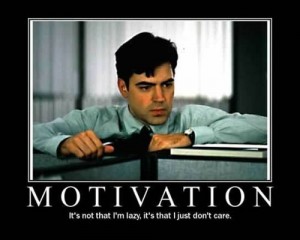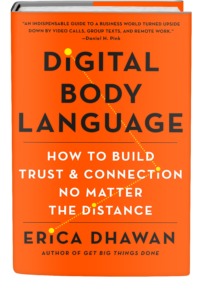‘Nuff said.
Archives for May 2012
Welcome to the 21st century
Get motivated to work

There is a lot of conversation about whether work motivation comes from extrinsic or intrinsic rewards. Most research has shown that extrinsic rewards (i.e, pay for performance) distorts results, whereas intrinsic rewards enhance performance.
I believe it goes back to how your work itself is organized. When work is designed well, you get more motivation and much higher quality because individuals care about work, and it generates commitment. There are certain conditions that must be met to create these conditions: Work must have meaning; avoid the classic assembly line problem, you are not just a cog in the wheel. One must experience responsibility: the choices you make have something to do with the outcome. There must be a clear bigger picture: you have some knowledge of how it all relates to a larger change in the world.
When designing work, there are five key ways to design motivational work (thanks to Harvard researcher Richard Hackman)
Task identity: when work is completed, it’s clear what your contribution was. Nothing is worse than working all day and thinking “What did I even accomplish?!”
Skill variety: It’s not same old, same old repetitive work. Engaging lots of different skills = fantastic.
Task significance: the work makes a difference in some way. You see the connection between what you’re doing and the difference you’re making.
Autonomy: This doesn’t mean that you always get to do what you want. It means you get a domain of choice about how you’re doing your work.
Feedback: This helps you SEE the difference that your work is making.
So here’s an exercise for you: rank how you currently design a work project from 1-5 in each of these categories. Where do you need improvement? What’s blocking you from doing your best work? Find out and address it. And share with us what your greatest work design challenge is in the comments here and I’ll help you refine it.

